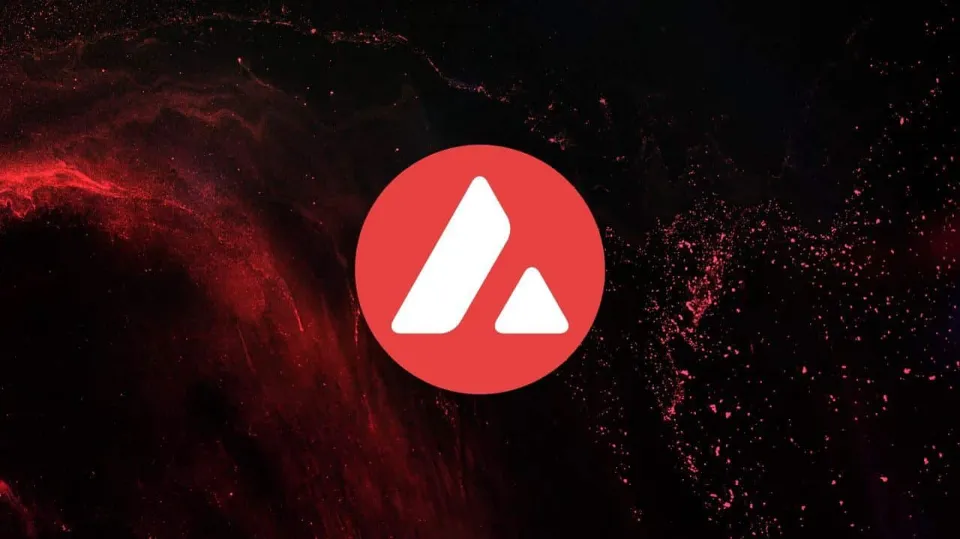The largest blockchain ecosystem in terms of protocols, DApps, and protocols is unquestionably Ethereum. It is, however, expensive and slow. Due to this, blockchains that aim to lower Ethereum gas fees and increase crypto transactions have emerged. This is where Avalanche and Polygon come in. The two blockchains seek to connect Ethereum intraoperative blockchains, minimize transaction costs, and increase speed. Which is superior, though?
With 65000 transactions processed per second (TPS) on the Polygon blockchain compared to Avalanche‘s 45000 TPS, Polygon blockchain is significantly faster than Avalanche.
Read more to learn the origins, technology, consensus, mechanism & tokenomics between AVAX and Polygon
What is Polygon?

Prior to changing its name, Polygon was first introduced as MATIC. Comparing the protocol to the alternatives reveals many of its unique features. One of the main purposes of Polygon was to seamlessly connect the increasing number of Ethereum-compatible networks. Polygon wants to make it possible for the over 300,000 ERC-20 tokens that are currently in use to freely communicate.
Polygon also enables these networks to communicate with other sovereign networks. This strategy has the advantage of lowering development costs and enhancing sector-wide usability. With Polygon, developers can use existing protocols on various blockchains without having to write new ones to fulfill the same function on different blockchains.
What is Avalanche?

A multi-layered fourth-generation blockchain called Avalanche supports all DeFi features. The protocol uses distinct layers to keep the ledger and the processing of smart contracts apart. This strategy enables the network to increase performance and scalability. Additionally, it makes use of an Ethereum layer, which makes the protocol migration for developers easier.
Avalanche expands the market’s programmability in a number of different ways. For example, the protocol streamlines the creation of application-specific blockchains. To create Dapps that are more engaging and useful, users can make use of multiple custom virtual machines. A popular coding language among developers, GO, is also used by the protocol.
Also Read: Crypto Compare Guide 2023 – Exchanges, Wallets, Tokens & More
AVAX Vs. Polygon Comparison

| Avalanche | Polygon | |
| Ticker | AVAX | MATIC |
| Founder(s) | Emin Gun Sirer | Jaynti Kanani, Sandeep Nailwal, and Anurag Arjun |
| Infrastructure | Triple blockchain ecosystem | Ethereum-based sidechain in use. has zk-Rollup and plasma capabilities. |
| EVM Compatibility | Yes | Yes |
| Burning Mechanism | Transaction fees burned | Annual burning for 0.27% tokens |
| Consensus Mechanism | Snowball | PoS |
| Transactions Per Second (TPS) | 4500 TPS, which could be 20,000 TPS. | 10,000 TPS |
| DeFi TVL | >$10 billion | >$5 billion |
| OpenSea Availability | No | Yes |
The Origins
Avalanche was founded by Ava Labs and former Cornell professor Emin Gun Sirer. It aims to build an ecosystem of platforms. A different iteration of a virtual machine is represented by each platform. Consider virtual machines as various operating systems that can be used to run smart contracts.
Polygon was previously known as “Matic Network” and was founded by Anurag Arjun, Jaynti Kanani, and Sandeep Nailwal. While Avalanche is an independent blockchain, Polygon is a sidechain and operates on top of Ethereum.
The Technology

Avalanche has a triple blockchain system that consists of –
- Exchange Chain (X-Chain): This chain is responsible for creating, transacting, and settling Avalanche assets. All transaction costs are paid in AVAX.
- Contract Chain (C-Chain): Because this chain is EVM (Ethereum Virtual Machine) compatible, developers can easily port their Ethereum applications over.
- Platform Chain (P-Chain): Developers can build unique Layer-1 (L1) or Layer-2 (L2) chains using this chain.
Many scaling technologies, including Plasma and zk-Rollups, are used by Polygon. Plasma is a layer-2 scalability solution that allows the Ethereum base chain to assign difficult computations to plasma sidechains. Zk-Rollups is another layer-2 technology that “rolls up” a bunch of transactions from the chain and processes it off-chain, before committing them back into the chain. Both of these technologies enable extremely quick computations for Polygon.
Consensus Mechanism
These protocols both employ a proof-of-stake (PoS) consensus mechanism in some manner. Avalanche also employs the Snowball mechanism, which has drawn praise for achieving speed without sacrificing decentralization.
The proof-of-stake (PoS) consensus mechanism is used by Polygon. Users of Polygon can take part both directly and indirectly. Direct participation involves becoming a network validator.
Tokenomics – AVAX and MATIC
The native token of the Avalanche ecosystem is called AVAX. Avalanche also burns all transaction fees to ensure deflationary tokenomics. There are currently 245,278,658 AVAX in use, with a maximum of 377,752,194.
Despite Polygon’s rebranding, MATIC remains the token ticker. There are a total of 10 billion MATIC tokens available, of which 6.87 billion have already been made available for use. Annual burns for MATIC remove 0.27% of the total supply of the token.
What Problems Was Polygon Built to Alleviate?
To enhance the Ethereum creators’ developer experience, Polygon was created from the ground up. Because of the protocol’s complete compatibility with Ethereum, creators can take advantage of the vast selection of Ethereum development tools available. They can also program in a language that supports Ethereum and produce ERC compliant tokens.
By streamlining the integration process, Polygon enhances subnetwork security. For example, the network introduces modular security features. These multi-chain protocols can be used by developers to guarantee the security of their system across various blockchains. The Ethereum community has reviewed Polygon and it is open source.

What Problems Was Avalanche Built to Alleviate?
Avalanche was built to improve developer capabilities. In comparison to most competitors, the network is designed to offer lower fees and better performance. With developers measuring the network at 6,500 transactions per second, Avalanche has achieved some impressive bench test results. The protocol has sub-second finality as well.
Another issue that the AVAX developers wished to avoid was inflation. As part of this strategy, they introduced a host of deflationary mechanics to the blockchain. For example, all transaction fees are burned on the Avalanche blockchain. This lowers the circulating supply which in turn drives up demand.
For Ethereum users and developers, gas fees have been a problem. Gas fees are the cost of paying nodes to execute smart contracts and transactions. As the DeFi movement’s congestion continues to increase, Ethereum has been harmed by cripplingly high gas prices this year. Due to the network’s multi-layered technical structure, Avalanche offers a lower fee structure.
How Does Polygon Work?
Polygon creates a multi-chain ecosystem like Avalanche but with different layers. Instead of just three, the network uses four layers. The composition of the network provides it with top-notch interoperability with other networks. By giving these networks secure communication options, all networks’ performance is enhanced.
Ethereum Layer
Ethereum Layer is the top layer. This layer is what enables Ethereum developers to leverage the same tools when creating Dapps, blockchains, and digital assets. Staking protocols fall under the purview of the layer. Finally, it is responsible for network messaging.
Security Layer
The Security Layer handles validation services for subnetworks. This system stands out because it offers subnets security as a service. As such, this layer acts as a non-mandatory option for developers. This layer manages validators within the main system.
Network Layer
The Polygon Networks Layer is where sovereign blockchains reside. The protocol manages the system’s overall consensus, including block production. Additionally, when transaction collateral is necessary, the network layer is tasked. As this structure separates consensus from smart contract execution, it offers greater security and improved performance.
Execution Layer
Finally, the task of interpreting transactions falls to the Execution Layer. Execution of these transactions is also handled by it. To accomplish this task, the protocol splits into two subsystems. Implementations of virtual machines are handled by the execution environment, whereas state transition operations are handled by the execution logic layer.
Compared to earlier protocols, the framework makes it easier for anyone to build new networks. To make creating a blockchain even simpler than before, the system provides one-click deployment and access to many program modules. For developers to create blockchains on Polygon, coding expertise is not required. The protocol provides solutions for everything from consensus, to governance. There are even modules that make it simple to integrate staking protocols, dispute resolution systems, and other things.
How Does Avalanche Work?
With the launch of its mainnet in September 2020, Avalanche made its debut on the market. Traders were immediately interested in the system for a variety of reasons. Emin Gün Sirer, a Cornell researcher from Ava Labs, chose to use multiple layers in his development of the system in order to improve upon its forerunners.
X-Chain
The foundation layer for asset creation is the X-chain. Token issuance procedures are handled by this layer. When issuing stablecoins, tokens, or NFTs, users engage with this layer. The flexibility of this layer makes it an integral addition to the network.
C-Chain
To facilitate better onboarding of Ethereum developers, the C-chain was developed. The purpose of this conversion chain is to make it simpler for developers to switch their systems from Ethereum to Avalanche. Avalanche is unique in having a chain strictly for conversions. Onboarding and transfer times have been significantly shortened thanks to its structure thus far.
P-Chain
The system’s administrative center is the P-chain. It deals with things like staking features and the creation of blockchains. The P-chain makes it easier to monitor subnets as well. Together all of these layers work to make Avalanche a solid alternative in the market.
Users of Avalanche have the option of staking their AVAX to guarantee passive returns. To become a validator node you need to stake 2000 AVAX. If this amount is too much for you, there are staking pools that allow you to participate at any level. Staking is ideal for traders because it provides consistent returns versus trading.
Final
Note
There are many parallels between Polygon and Avax. Their rates of growth are also fairly similar. They actually have an 0.82 correlation coefficient.
They do not, however, have the same growth curve. The platform for smart contracts called Avalanche is extremely quick. Additionally, it is inexpensive and environmentally friendly.
On the other hand, Polygon has a flexible network that supports the creation of multiple chains. It is a user-friendly platform for scalability and infrastructure expansion of Ethereum platforms.
The avalanche already exceeds the polygon in size and may continue to rule MATIC for some time.
FAQs
Does AVAX Have a Future?
In 2026, AVAX will be green, based on our predictions. In 2026, the AVAX is anticipated to reach and surpass its all-time high. In 2026, the virtual currency will be worth $78.07, with a minimum price of $69.39 and an average price of $72.86.
Is Polygon Better Than Solana for Gaming?
Polygon and Solana are two of the most popular blockchain platforms. Using Ethereum’s virtual machine, Layer 2 solution Polygon can process up to 65,000 transactions per second. Solana is a Layer 1 blockchain platform that can handle 50,000 transactions per second and is popular in the NFT space.
Will AVAX Go Back to $100?
We expect the price of AVAX to cross $100 by 2025. AVAX would need to first experience a high trading volume and a steady increase in the market cap for the coin to move this far, though.



